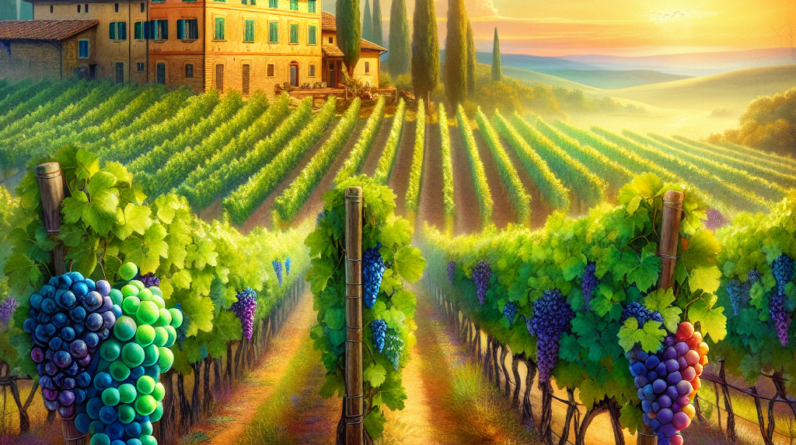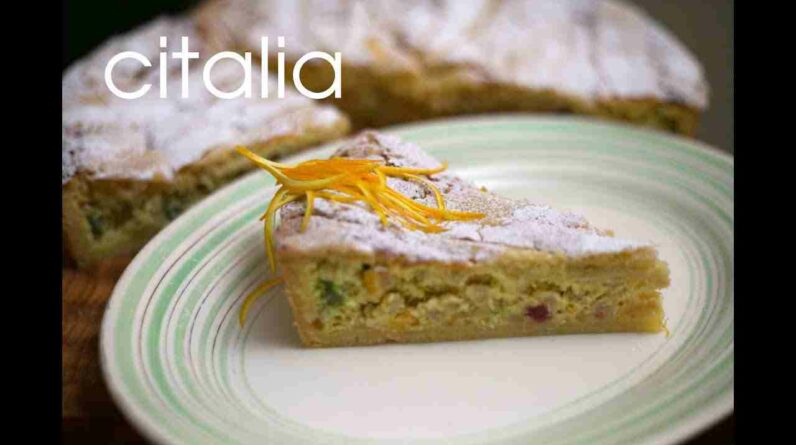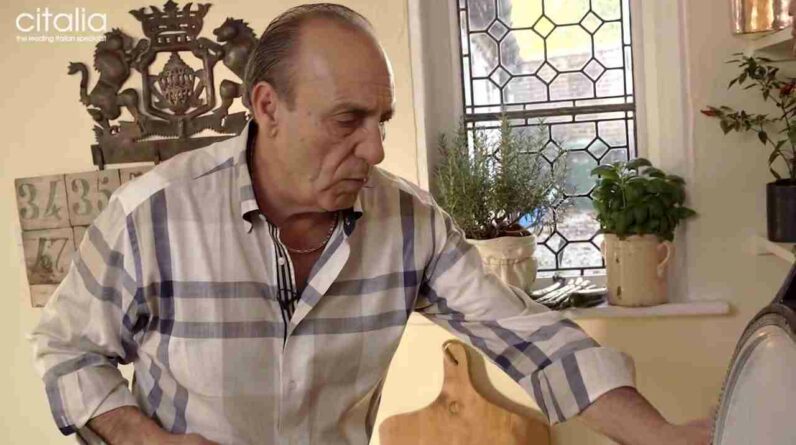Italian liqueurs are like liquid poetry, steeped in tradition and flavored by history. Imagine strolling through the sun-dappled countryside of Italy, the scents of wild herbs and fruits hinting at the artistry of local distillers who’ve been perfecting their craft for centuries. Liqueurs in Italy are not just beverages; they’re a celebration of culture and a nod to a storied past.
The origin of Italian liqueurs like Sambuca and Grappa can be traced back to medieval monasteries, where monks with a flair for botanicals started brewing up elixirs for medicinal purposes. Grappa, with its heady punch, was initially a way for farmers to ensure not a single grape from their precious harvest went to waste. They took the pomace—the skins, pulp, seeds, and stems left over from winemaking—and distilled it into a clear, potent spirit that warmed the belly and lifted the spirits during the coldest alpine winters.
On the other hand, Sambuca has a sweeter, more mysterious origin story. It’s said to have been the brainchild of Italian sailors who brought back the exotic star anise spice from the East. They mixed it with locally sourced elderberries, creating a smooth, anise-flavored concoction that was believed to ward off the evil eye. Whimsy or not, Sambuca quickly caught on as a fireside favorite, particularly enjoyed with three coffee beans—known as ‘con la mosca,’ or ‘with the fly’—served floating on top for good luck and prosperity.
A stroll through Italy’s culinary delights isn’t complete without indulging in these historic libations. Each region from Piedmont to Sicily puts its own spin on these ancient recipes, often keeping their family’s secret methods and blends under lock and key. The legacy of Italian liqueurs is more than just taste; it’s a window into the heart and soul of Italy’s regional identities.
Whether sipping Sambuca as a smooth end to a delectable meal or enjoying a bracing snifter of Grappa alongside your espresso, indulging in these Italian staples is to partake in an age-old ritual. And remember, these aren’t just drinks; they’re stories, lovingly crafted and poured out one glass at a time.
Ingredients Used in Sambuca and Grappa
So then, what goes into these storied potions that enchant our palates? Let me tell you, each sip of Sambuca or Grappa comes with its own set of unique and carefully chosen ingredients—each one essential to the signature flavors that dance across your tongue.
Let’s talk about Sambuca first, shall we? This sweet, strong liqueur’s main star is star anise. Oh, but it doesn’t end there! Some recipes might incorporate green anise or even licorice for that added depth of sweet, herbal flavor, creating a complex bouquet that can only be described as divinely Italian. Additionally, the essential oils are often extracted through steam to produce the purest anise essence. But it’s the inclusion of other botanicals like elderflowers, mint, or spices that gives Sambuca its unique personality, a personality that varies from one distiller to the next. Want to know a secret? A touch of sugar is typically added, acting as the perfect counterpart to the robust anise flavor.
Moving on to Grappa, this sharply delightful spirit boasts a more robust, rustic charm. The foundation of Grappa is pomace, the grape residue I mentioned earlier. But it’s not enough to just scoop up the leftovers from winemaking—oh no. A distiller will carefully select the pomace, paying close attention to the grape varietal. Whether it’s the robust Nebbiolo or the aromatic Moscato, the choice of grape sets the stage for the Grappa’s character. In Grappa’s case, there’s no added sugar, making it a dry spirit that carries the essence of the grape and the earth it was grown in.
It’s important to note that the quality of the ingredients is paramount to the final product. Imagine the grapes soaking up that Italian sunshine, or the anise catching whispers of Mediterranean sea breezes. These aren’t just ingredients; they’re little pieces of Italy itself!
And don’t forget the importance of the water! Clear, pure spring water is often used to bring Sambuca and Grappa to their desired alcohol content, ensuring nothing interferes with the rich, natural flavors presented.
Now, picture yourself sampling these delights. Think of the anise in Sambuca as a gentle breeze over the fields of Tuscany, while the robust profile of Grappa is like a firm handshake from a Piedmontese farmer. These ingredients, you see, they’re not just stuff in a bottle. They’re an invitation to experience the soul of Italy, one taste at a time.
So when you’re next twirling your pasta or snapping a crispy cannoli shell, spare a thought for the beautiful simplicity and complex flavors of these Italian masterpieces. Italian liqueurs, my friends, are an edible adventure, a sip of history, and, most importantly, a pure expression of the love and tradition embedded in Italian culture. Salute!
Distillation Techniques for Grappa

Buckle up, amici, we’re diving into the fascinating world of Grappa distillation. It’s like the iPhone of spirits in the sense that it’s all about good design and execution. Grappa is not just any run-of-the-mill spirit; oh no, it’s the result of an art form perfected over generations, tweaked and polished like an old family recipe.
The process begins with the pomace, those leftover bits after the grapes have been pressed for wine. But don’t be fooled into thinking this is waste—no, this is gold for Grappa makers. They heat it up in what’s essentially a gigantic kettle, where it cozies up and starts to release those potent vapors.
Here’s where it gets steamy—literally. These vapors, laden with alcohol and flavor, rise up and snake their way through a clever setup called a distillation column, cooling down and condensing back into a liquid. But, and this is crucial—the Grappa is not born equal at this stage. It comes out in fractions: the head, the heart, and the tail. The head is too feisty, and the tail, while telling fascinating tales, can be a bit rough around the edges; it’s the heart where the true spirit of Grappa shines.
Selecting the heart is like finding the rose among the thorns. The distiller’s skill is key here—a true taste whisperer can pick out the moment when the head becomes the heart, capturing the essence of the grape, the dedication of the farmer, and Italy’s spirit itself. Too early or too late, and you’ve got a libation that just doesn’t sing the same melody.
Once they’ve isolated this liquid treasure, it’s time for the alchemy to mature. Grappa can either strut its stuff straight away as a young daredevil, or it can take a breather, aging gracefully in wooden casks that lend whispers of vanilla, oak, and a color that’s like bottled sunshine—a full-bodied expression of the land.
But wait, there’s one last dance step: proofing. Yes, this involves adding water—but not just any H2O. This water has to be so pure, so pristine, that not even a single dissolved mineral can dream of spotlight-stealing the Grappa’s thunder.
So, imagine sitting back in a leather chair, swirling this liquid legend in your glass. You’re not just about to taste a spirit; you’re about to embark on a sensory journey through Italy’s vineyards, right in the comfort of your own home. That, my friends, is the magic of Grappa distillation—a sip of heritage with every drop.
And while you may not have barrels and stills in your kitchen (if you do, we need to talk), you can still embrace the spirit of Grappa by pairing it with a fine meal or using it to add a dash of Italian bravura to your cooking. It’s not just an after-dinner digestivo; it’s a trick up your sleeve when you want to impress at your next dinner party.
As you sip on that crystal-clear Grappa or amber-hued Riserva, salute to the master distillers who have crafted this experience. Feel the warmth, the flavor, and the love that can only come from an Italian tradition handed down through the centuries. Grappa is not just a drink; it’s a story in each glass. Cin cin!
The Art of Flavoring Sambuca
Alright, bellissimi, let’s turn our attention to the enchanting world of Sambuca. You’ve learned about the ingredients and the romance of its origins, but how about the art of flavoring this delightful Italian elixir? It’s a dance of aromas that turns the humble anise into a symphony of sweet sophistication.
Picture this: in an old Italian village, tucked away behind a brightly painted facade, a seasoned distiller is crafting Sambuca as though composing a melody. Here, the main notes are the star anise and often green anise too, both singing a tune of deep, earthy sweetness. The distiller lets these botanicals take center stage, but like any good maestro, knows the magic is in the harmony.
What many don’t realize is the delicate act of infusion that’s involved in reaching this liqueur’s harmonious flavor. Beyond the anise, sometimes whispers of other herbs or spices are slipped into the mix. A hint of elderflower might bloom in the background, or a dash of cinnamon could add a warm spice that’s like hugging a dear friend. Every recipe is a guarded treasure, an alchemy that combines the classic with the distiller’s personal touch. It’s about building a cascading, nuanced palate that transports you right to a festive Italian gathering.
And those three coffee beans, “con la mosca,” that we often see floating in a served Sambuca? They’re not just for show—they’re tradition, prosperity, and health, with each bean carrying a hidden wish. As the liqueur caresses your palate, those beans offer up a toasted charm that rounds out the sweet, licorice kiss of this storied spirit.
But the art doesn’t end at the flavoring. The clever distiller knows that sweetness plays its part in this ballet of tastes. That’s right, a bit of sugar to sway arm-in-arm with anise’s bold flavors, culminating in a liqueur that’s smooth enough to glide across your taste buds, leaving a trail of satisfaction in its wake.
Let me set a scene for you with Sambuca: You’re sitting on a terrace as the sun sets over the Italian coast. There’s a gentle hum of conversation, the clinking of glasses. You’re served a glass of this anise-infused marvel, and as you sip, the world seems to slow down. You’re not just enjoying a drink; you’re partaking in an age-old Italian tradition that’s been shared around tables and firesides for generations. This is the spirit that captures the essence of la dolce vita, a nod to the simple yet profound joy of good company and great flavors.
Creating Sambuca is like painting a picture with tastes and aromas. It’s not enough just to throw ingredients together. No, it’s about coaxing out the soul of each component, allowing the time-honored infusion process to do its magic until everything is just right. When you appreciate Sambuca, you’re not simply tasting; you’re experiencing a storied craft that’s as rich and colorful as Italy itself.
So next time you raise a glass of Sambuca, whether you’re enjoying it neat, with ice, or alight in the traditional Italian manner known as ‘flaming Sambuca’, pause to savor the artistry in each sip. It’s not just a drink, it’s a showcase of flavor, and it’s unmistakably Italian.
Aging and Bottling Processes

The tale of Italian liqueurs doesn’t end at the distillery door, no sirree. The true pièce de résistance is their aging and bottling, where the liquid artistry finally comes of age, ready to be uncorked and enjoyed. Pull up a seat, amico, and let’s talk about how the likes of Sambuca and Grappa go from still to thrill.
Pour yourself a little patience because, for Grappa, the aging process can be a test of restraint. Depending on the type of Grappa, it might sidle up in an oak, ash, or cherry wood barrel, simmering down and taking in the wisdom and whispers of the cask. It’s here that Grappa can develop an amber hue, stealing hints of vanilla, almonds, and even a touch of caramel. This mellowing stage sees our robust friend turning into a smooth character, gaining complexity that unfolds on the palate like a well-told story. Some Grappas are aged for years, becoming ‘Riserva’—a term that hints at the patience required to achieve such a dignified status. They’re the sages of spirits, deserving of a slow, appreciative sip.
Sambuca, on the other hand, doesn’t dally in barrels. Instead, it stays youthful and sprightly, promptly moving on to the grand finale—bottling. But that doesn’t mean the process lacks ceremony. No, my friends, bottling is where the final magic happens. It’s the dressing up for the ball, the last brush stroke on the canvas.
Both Sambuca and Grappa are meticulously bottled with a focus on preserving their aromatic profile and ensuring top-notch quality. For Sambuca, sugar is often added at this stage to create that smooth, syrupy texture we know and love. The spirit fills the bottles with a swan-like grace, each one a little message in a glass, ready to sail off to bars, homes, and gatherings across the world.
Ever notice how Italian liqueur bottles are often as beautiful as the elixirs they contain? That’s because presentation is as much a part of the Italian tradition as the drink itself. Elegant, ornate, sometimes whimsical—the bottles are designed to catch the eye, flirt with the senses, and promise the delights contained within.
Once corked and sealed, they’re housed in boxes and wait their turn to be unveiled. Each bottle of Grappa and Sambuca holds the heart of Italy, ready to be gifted, shared, and enjoyed. That first pop of the cork? It’s not just the unleashing of a drink, it’s the beginning of an experience. It’s the shared glances around the table, the clink of glasses, the murmurs of approval as the first drops are poured. It’s the fabric of Italian life, bottled and served!
Think of it, each time you reach for a bottle of these Italian wonders, you’re not just grabbing a drink off the shelf. You’re grasping at a moment in time, a piece of heritage, and a privilege. You’re reaching for the sun-soaked terraces, the cool cellars where barrels rest, the pride of Italian distillers whose work is a testament to their love for tradition.
Whether you’re toasting to good news with a snazzy Sambuca or reminiscing over a fine meal with a glass of aged Grappa, these bottles are your tickets to la bella vita. They encourage lingering over flavors, encourage lively conversations, and encourage making memories one sip at a time.
So gather around, amici. Pop open that liquid testament to Italian craftsmanship and let’s toast—to the aging, the bottling, and the sheer joy of savoring Italian liqueurs. Each drop, a celebration; each glass, a journey deep into the heart of Italy.










